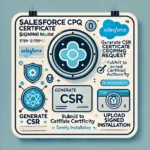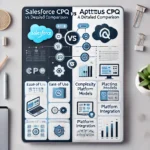Salesforce Shield Event Monitoring is a powerful feature designed to enhance the security and compliance capabilities within Salesforce environments. This comprehensive guide explores what Salesforce Shield Event Monitoring entails, its various types, and provides frequently asked questions (FAQs) to help you understand its importance and implementation.
Introduction to Salesforce Shield Event Monitoring
Salesforce Shield Event Monitoring is part of Salesforce’s suite of security and compliance tools aimed at providing enhanced visibility and control over your Salesforce org’s activities. It allows organizations to monitor and audit user interactions, configuration changes, and data access within their Salesforce instance. This proactive monitoring helps organizations maintain data integrity, ensure regulatory compliance, and detect potential security threats.
Types of Salesforce Shield Event Monitoring
-
Login Monitoring:
- Description: Tracks user login activities, including successful logins, failed logins, and login history.
- Use Cases: Helps in detecting unauthorized access attempts and ensuring users adhere to security policies.
-
API Monitoring:
- Description: Monitors API calls made to your Salesforce instance, including REST API, SOAP API, and Bulk API operations.
- Use Cases: Enables organizations to monitor data integration activities and identify potential misuse of APIs.
-
Report Export Monitoring:
- Description: Logs instances where users export Salesforce reports and dashboards to external systems.
- Use Cases: Ensures data exported from Salesforce is tracked for compliance purposes and prevents unauthorized data extraction.
-
Field History Tracking:
- Description: Tracks changes to specified fields in Salesforce objects, recording old and new field values.
- Use Cases: Facilitates auditing of data modifications and supports data governance initiatives.
-
Apex Transaction Monitoring:
- Description: Monitors Apex transactions executed within Salesforce, including triggers, batch processes, and web services.
- Use Cases: Helps in debugging Apex code, identifying performance bottlenecks, and ensuring adherence to coding best practices.
-
Content Monitoring (Files and Attachments):
- Description: Monitors access and modifications to files and attachments stored in Salesforce.
- Use Cases: Ensures data security and compliance by tracking user interactions with sensitive documents.
Benefits of Salesforce Shield Event Monitoring
- Enhanced Security: Provides real-time visibility into user activities and potential security threats.
- Compliance Readiness: Facilitates adherence to industry regulations (e.g., GDPR, HIPAA) by maintaining audit trails.
- Operational Insights: Helps in optimizing Salesforce performance and identifying usage patterns.
- Data Integrity: Ensures data modifications are logged and auditable, supporting data governance initiatives.
Implementation Guide to Salesforce Shield Event Monitoring
-
Evaluate Requirements:
- Assess regulatory compliance needs and internal security policies to determine the scope of monitoring required.
-
Review Event Types:
- Understand the different types of events that can be monitored, such as login attempts, API calls, data exports, and configuration changes.
-
License Considerations:
- Check licensing requirements as Salesforce Shield Event Monitoring may require additional licenses beyond standard Salesforce editions.
-
Enable Event Monitoring:
- Navigate to Setup > Security > Event Monitoring in Salesforce Setup.
- Enable desired event types based on organizational requirements and compliance needs.
-
Configure Monitoring Policies:
- Define monitoring policies and thresholds to align with security policies and compliance standards.
- Specify conditions for triggering alerts or notifications based on event severity or type.
-
Integrate with SIEM Tools:
- Integrate Salesforce Shield Event Monitoring with Security Information and Event Management (SIEM) systems for centralized monitoring and correlation of security events.
-
Training and Awareness:
- Conduct training sessions for Salesforce administrators and users on event monitoring capabilities, best practices, and incident response procedures.
-
Continuous Monitoring and Review:
- Regularly review event logs and monitoring reports to identify anomalies, trends, or potential security incidents.
- Adjust monitoring configurations as needed based on evolving security threats and organizational changes.
FAQs about Salesforce Shield Event Monitoring
Q1: What is the difference between Event Monitoring and Field Audit Trail in Salesforce?
- Answer: Event Monitoring focuses on monitoring user activities and system events within Salesforce, while Field Audit Trail specifically tracks changes to field values in Salesforce objects over time.
Q2: How can Salesforce Shield Event Monitoring help with regulatory compliance?
- Answer: By providing comprehensive auditing capabilities, Shield Event Monitoring helps organizations demonstrate compliance with regulatory requirements by maintaining detailed logs of user activities and data access.
Q3: Is Salesforce Shield Event Monitoring available in all Salesforce editions?
- Answer: No, Salesforce Shield Event Monitoring is part of Salesforce Shield, which is available as an add-on to Enterprise and Unlimited editions, or as part of Salesforce Shield Platform license.
Q4: Can Salesforce Shield Event Monitoring be customized to monitor specific events or activities?
- Answer: Yes, organizations can customize Event Monitoring to monitor specific events, such as login attempts from specific IP ranges or API calls from external integrations.
Q5: What are the performance considerations when enabling Salesforce Shield Event Monitoring?
- Answer: Enabling Event Monitoring incurs minimal performance overhead, as Salesforce manages event data storage and processing efficiently within its platform infrastructure.
Conclusion
Salesforce Shield Event Monitoring is a crucial tool for organizations looking to enhance their Salesforce security posture and ensure compliance with regulatory standards. By offering comprehensive monitoring capabilities across various event types, organizations can proactively manage risks, protect sensitive data, and maintain transparency in their Salesforce operations.
Implementing Salesforce Shield Event Monitoring not only strengthens security defenses but also fosters trust among users and stakeholders by demonstrating a commitment to data protection and regulatory compliance.
In conclusion, leveraging Salesforce Shield Event Monitoring empowers organizations to safeguard their Salesforce environments effectively while adhering to stringent security and compliance requirements.


